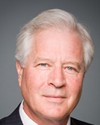Thank you.
My name is Marc Audet and I am a vice-president at Fiducie Desjardins, in the Immigrant Investor Program. I have worked in that program for over 15 years.
My presentation will deal with processing times for the immigrant investor class, for both the Quebec program and the federal program. It will be divided into three parts: current processing times, expected times and our recommendations.
I have prepared set of documents for the participants. There is an English version and a French version. I invite you to look at the various sections during my presentation.
Before looking at processing times, I would like to note that I have attached a list of countries of permanent residence showing the corresponding Canadian visa offices, for filing the application, in section 1A. This will help you follow.
Before looking at sections 1B and 1C, I would like to draw your attention to the fact that the number of months shown represents the number of months between the date the application is received by CIC and the date when the decision is made, that is, the date the visa is issued. So the processing time does not indicate the time it would take to finalize the thousands of cases now waiting.
You will see that 80% of the cases finalized in 2009, worldwide, were submitted 35 months earlier, so in 2006 and 2007. The current situation for the busiest Canadian visa offices, in terms of investors to be processed, is as follows: Beijing: 33 months; Damascus: 35 months; Hong Kong: 40 months; Islamabad: 46 months; London: 25 months; New Delhi: 23 months; Seoul: 29 months; Singapore: 37 months; and Taipei: 24 months. This is the situation for 80% of cases. So that leaves 20%. We will see the number of applicants that means in a moment.
Section 1C represents processing times for immigrant investors in the Quebec program. Here, it should be noted that for Quebec cases, a selection certificate is issued, and the $400,000 investment has been made. The federal government's job is therefore the background check and medical examination, which are a prerequisite for issuance of a permanent resident visa. You can see that for 2009, the average for all offices worldwide is 17 months, for 80% of cases. For Quebec cases, the processing times in the busiest offices are: Abu Dhabi: 1 month; Ankara: 6 months; Beijing: 13 months; Cairo: 28 months; Damascus: 27 months; Hong Kong: 16 months; and Islamabad: 29 months.
Sections 1D, 1E and 1F show the volume that CIC processed during a 12-month period, from October 1, 2008 to September 30, 2009. The document in section 1D provides an overall portrait of investors, both for Quebec and federally. The document in section 1E is limited to federal cases, and the one in section 1F is just Quebec cases. We can conclude that the number of investor cases processed by CIC, whether accepted or rejected, was 2,968. That figure breaks down as follows: 1,126 cases accepted and 486 rejected by the federal government, for a total of 1,612; 1,327 cases accepted and 29 rejected by Quebec, for a total of 1,356. The two totals combined come to 2,968 cases. That number is relatively low, given the total for other categories. We can conclude that processing the 1,612 cases in the federal programs took 35 months while the 1,356 Quebec cases took 17 months. The figures for recent years show substantially the same levels both in Quebec and at the federal level, 3,000 cases finalized per year, more or less, and average processing times of over 30 months federally and over 15 months for Quebec.
What is the current trend, given the inventory, the number of cases underway, in relation to the pace of processing? We estimate that if nothing is done for the 2011 fiscal year, the immigrant investor program will be in jeopardy. Processing times will be unacceptable to this clientele, which has other options. I think this subject will be covered by another participant.
I invite you to look at the table shown in section 2A. It is based on the latest official statistics from CIC. It summarizes the current situation, specifically for the federal program. The processing time, which was 35 months for 2009, will likely be about 60 months more or less for 2010 and 2011. In addition, Quebec's volume is also growing, so CIC is facing a double impact.
The table in section 2B offers an overall perspective for recent years. It is clear that the targets have to be increased if we want this program to continue to attract the international elite.
If we move on to section 3, we can see that there are hundreds of thousands of immigrants in line and that each one has reasons for seeking Canadian permanent resident status. However, given the conclusions from the study by Analysis Group, the low number of investor cases processed each year, disadvantages unique to investors and international competition, we recommend that CIC consider a substantial increase in the annual volume processed.
Considering the figures in the table in section 3A showing variations in inventory for the period up to 2013, we recommend that the federal program try to process 6,000 cases over the next three years, which would allow for reasonable waiting times of 24 months more or less to be achieved.
For the Quebec program, given the quality of the selection work done by the Quebec ministère de l'Immigration et des Communautés culturelles, there should be a target of a maximum waiting time of 12 months more or less, which would bring the number of cases processed to an average of 2,000 cases a year, more or less, based on current inventory and the 2010 and 2011 targets of the Quebec ministère de l'Immigration et des Communautés culturelles.
I will be pleased to answer your questions.
Thank you.









